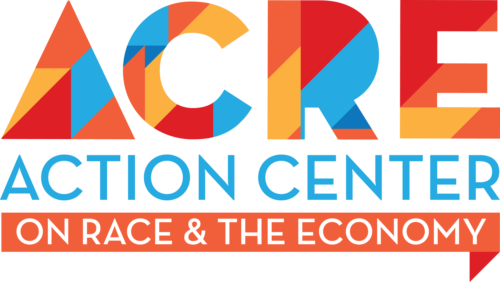- Donors can avoid capital-gains tax on non-cash investments
- Largest U.S. grant-maker has faced scrutiny as assets balloon
- Read the full story here.
As cryptocurrencies boomed last year, boosting the wealth of investors in the asset class, so did the amount of philanthropic gifts made with digital tokens.
Fidelity Charitable, the largest grant-maker in the U.S., received $331 million in digital assets last year through its donor-advised funds, or DAFs, a nearly 12-fold increase from the $28 million it got in 2020, according to a report released Tuesday. Bitcoin accounted for 88% of crypto donations, followed by Ether at 11%.
“We’re seeing a mix of donors old and young” with crypto, Jacob Pruitt, Fidelity Charitable’s president, said in an interview. The organization’s team specializing in complex assets tries to sell donations of digital tokens as quickly as possible, he said, because of their volatility and so donors can grant money faster.
Fidelity Charitable, the nonprofit affiliate of Fidelity Investments, and other providers of DAFs can accept assets that many nonprofits can’t, from crypto to stakes in hedge funds and privately owned businesses.
That’s helped fuel a surge of wealth into DAFs, because giving non-cash assets directly to charity comes with a big tax advantage: Under Internal Revenue Service rules, donors can both deduct the value of the gift and avoid any capital-gains tax on the investment. Fidelity Charitable has about $50 billion in assets.
Major Player
Last year, two-thirds of donations to Fidelity Charitable came in the form of non-cash assets, according to the organization’s 2022 Giving Report. Total contributions have surged, jumping to $15.3 billion in the fiscal year ended in June, up 43% from the previous 12-month period.
Matt Levine’s Money Stuff is what’s missing from your inbox.
We know you’re busy. Let Bloomberg Opinion’s Matt Levine unpack all the Wall Street drama for you.EmailSign Up
By submitting my information, I agree to the Privacy Policy and Terms of Service and to receive offers and promotions from Bloomberg.
Those assets have made Fidelity Charitable a major player in philanthropy. Grants from the organization rose 13% last year to $10.3 billion, building on a 24% surge in donations in 2020. While grants to human services charities, like food banks and homeless shelters, surged around the time the pandemic hit, last year’s big trend was a rise in DAF money going to arts and cultural organizations, increasing the sector’s share of Fidelity grants to 9% from 5%.
The popularity of DAFs and the rapid growth of Fidelity Charitable, the largest in the space, have attracted scrutiny from nonprofits, philanthropists and members of Congress, who have voiced concerns that donations are sitting in the funds for too long, providing an immediate tax deduction for money that doesn’t reach working charities in a timely fashion.
Bipartisan legislation, introduced in the Senate last year and in the House this month, would place new rules on DAFs, including a provision that provides an upfront deduction only for money distributed within 15 years.
Pruitt warned new rules could have the unintended consequence of slowing down DAF grant-making to the bare minimum.
“We support any proposal that expands charitable giving, but we think this proposal is trying to solve a problem that really doesn’t exist,” he said. Fidelity Charitable makes an effort to encourage donors to “make your money work and get that money out to nonprofits.”
Activists’ Concerns
Fidelity’s size has made it the target of other criticism. In 2019, after Fidelity overtook the Gates Foundation as the largest grant-maker in the country, a coalition of activist organizations started a campaign called Unmasking Fidelity.
It argues Fidelity is “funneling millions of dollars through donor advised funds to anti-Muslim, anti-Black, anti-LGBTQ and anti-immigrant organizations,” said Ramah Kudaimi, a campaign director at Action Center on Race and the Economy, one of the groups in the Unmasking Fidelity coalition. “If the largest grantmaker sets the standard, then hopefully others will follow too.”
Pruitt said the grantmaker vets donations only based on legal criteria like making sure the IRS has determined the recipient is a legitimate nonprofit.
“These grants are not from us, per se,” Pruitt said. “They’re based on the recommendations from our donors.”
While billionaires, including MacKenzie Scott and Jack Dorsey, have used Fidelity and other sponsors as a way station for their giving, most DAF users aren’t super-wealthy. Fidelity manages almost 175,000 DAFs, and its median account contains less than $25,000.
Dogecoin Donations
The Giving Block, a startup that helps nonprofits accept and raise funds in Bitcoin and other digital assets, saw a similar 16-fold jump in crypto gifts, to $69.6 million last year, according to its annual report. Co-founder Alex Wilson expects that figure to increase again in 2022, even if crypto prices don’t skyrocket like last year.
While Fidelity only helps clients with more established coins, the Giving Block also works with more speculative ones like Dogecoin, Shiba Inu and Dogelon Mars. The startup processed $358,155 worth of gifts from those three in 2021, mostly Dogecoin.
A CNBC survey in December found that the majority of millennial millionaires have the bulk of their wealth in crypto. For tax reasons, it makes sense to give your highest-appreciating assets first, Wilson said.
“We’re very candid with the donors, essentially saying, ‘Would you rather donate to your favorite charity or donate to the IRS?’” he said. “That’s something that’s really resonated.”
